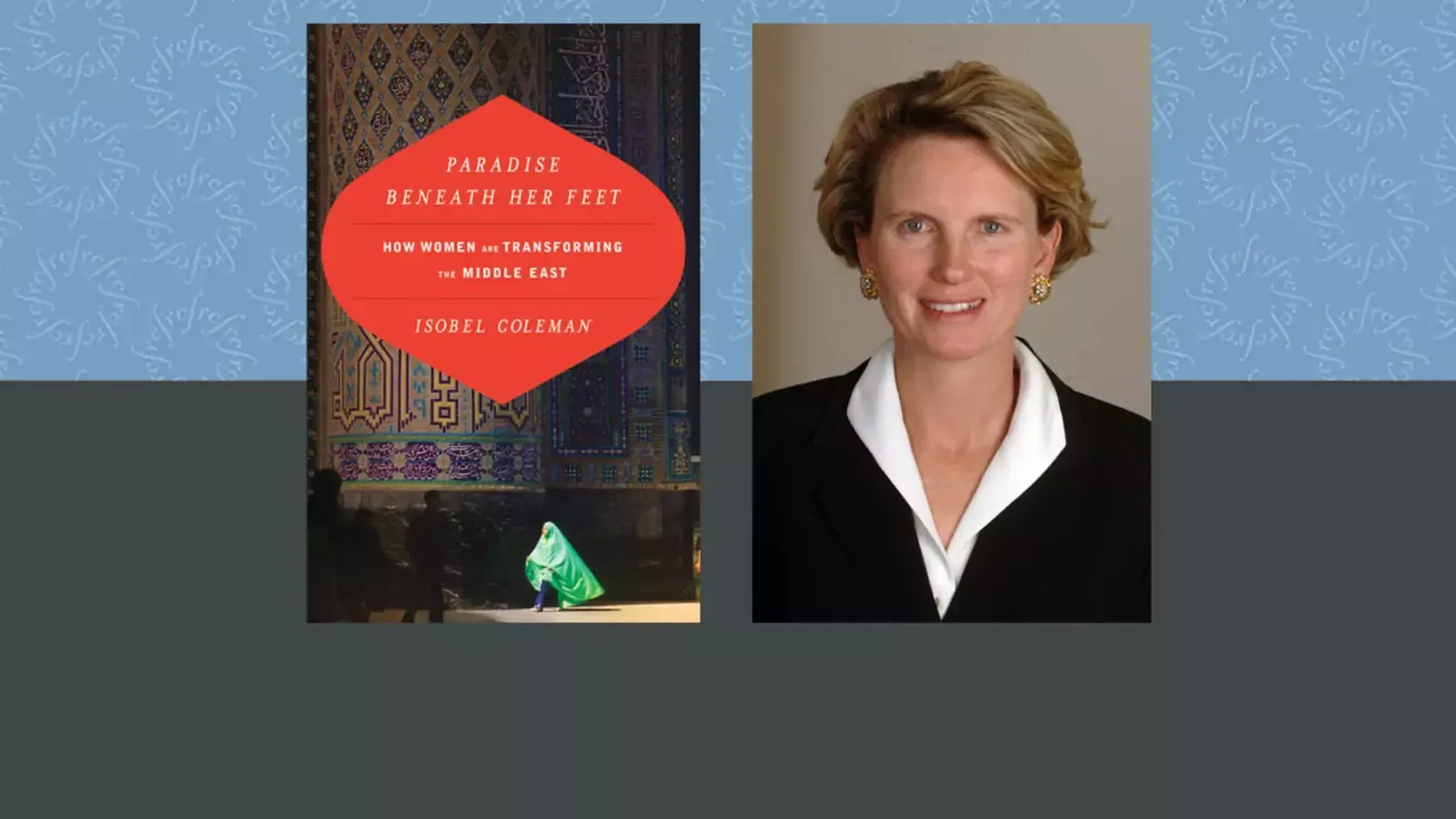Paradise Beneath Her Feet

Introduction
In this book, CFR Senior Fellow Isobel Coleman demonstrates how influential Islamic feminist thinkers are driving social change in the Middle East to create economic, political, and educational opportunities for women. Teaching notes by the author.
Summary
Over the centuries throughout the world, women have struggled for equality and basic rights. Their challenge in the Middle East has intensified given the rise of a political Islam that too often condemns women's empowerment as Western cultural imperialism or anti-Islamic. In Paradise Beneath Her Feet, Isobel Coleman shows how Muslim women and men are fighting back with progressive interpretations of Islam to support women's rights in a growing movement of Islamic feminism.
In this book, Dr. Coleman journeys through the strategic crescent of the greater Middle East—Saudi Arabia, Iraq, Iran, Afghanistan, and Pakistan—to reveal how activists are working within the tenets of Islam to create economic, political, and educational opportunities for women. She argues that these efforts are critical to bridging the conflict between those championing reform and those seeking to oppress women in the name of religious tradition. Success will bring greater stability and prosperity to the Middle East and stands to transform the region.
Dr. Coleman highlights a number of Muslim women and men who are among the most influential Islamic feminist thinkers, and illuminates the on-the-ground experiences of women who are driving change. These quiet revolutionaries are using Islamic feminism to change the terms of religious debate—to fight for women's rights within Islam instead of against it.
This book is suitable for courses on introduction to Islam/Muslim societies; introduction to the Greater Middle East; sustainable development and development economics; and women's rights, feminism, gender equality in the world.
Discussion and Essay Questions
Courses on Islam/Muslim Societies
- Can Islam be compatible with women's rights?
- What role is Islamic feminism playing in contemporary debates?
- How is Islamic feminism evolving?
- What role does the West play in Islamic feminism?
- What role do men play in Islamic feminism?
- What is the relationship between Islamic feminism and sharia?
- How are women using ijtihad to advance their rights?
- What is the relationship of women's rights within Islam to a broader reform movement within Islam?
Courses on the Greater Middle East
- What is the current status of women in the Middle East? How does women's status vary across countries?
- Where in the Middle East have women made gains? Where have they lost ground?
- How and why are women using Islam to promote their rights?
- What are the underlying drivers of the changing role of women in the Middle East?
- Several countries in the greater Middle East have used political quotas to improve women's representation in government. Does having more women in government improve women's rights?
- Women now outnumber men at the college level in several Middle Eastern countries. What impact might this have over the longer term?
- What role does the media play in the Middle East with respect to women's rights?
Courses on Sustainable Development and Development Economics
- What do economic indicators (such as those produced by UNESCO, MENA, WHO, World Bank) reveal about the status of women in the Middle East relative to other regions?
- What is the link between women's empowerment and economic growth?
- What impact will rising levels of female education have on the region?
- What is the role of the international community in enhancing women's education, health, and economic and political access? What should it be?
Courses on Women's Rights, Feminism, Gender Equality in the World
- How is Islamic feminism similar to and different from secular feminism?
- What need, if any, is there for Islamic feminism (as opposed to secular feminism)?
- How are Islamic feminists and secular feminists working together?
- How are Islamic feminists driving social change? What success have they achieved?
- How are women's movements collaborating across countries?
Supplementary Materials
Ahmed, Leila, Women and Gender in Islam: Historical Roots of a Modern Debate, 1993 (New Haven: Yale University Press).
Arab Human Development Report 2005: Toward the Rise of Women in the Arab World, Human Development Report, United Nations Development Program, 2005, http://www.arab-hdr.org/publications/other/ahdr/ahdr2005e.pdf.
Duflo, Esther, "Gender Equality in Development," BREAD Policy Paper No. 001, 2005.
Fish, M. Steven, "Islam and Authoritarianism," World Politics 55.1, October 2002.
Fritschel, Heidi and Uday Mohan, "The Fruits of Girls' Education," in The Unfinished Agenda: Perspectives on Overcoming Hunger, Poverty and Environmental Degradation, Per Pinstrup- Andersen and Rajul Pandy- Lorch, eds., 2001(Washington, D.C.: IFPRI).
Khan, Sayyid Ahmad, "The Rights of Women," in Mansoor Moaddel and Kamran Talattof, eds., Modernist and Fundamentalist Debates in Islam: A Reader, 2002 (New York: Palgrave Macmillan).
Mernissi, Fatima, The Veil and the Male Elite: A Feminist Interpretation of Women's Rights in Islam, 1991 (New York: Basic Books).
Yunus, Muhammad, Banker to the Poor: Micro- Lending and the Battle Against World Poverty, 1999
(New York: Perseus Books Group).
Global Fund for Women (GFW), www.globalfundforwomen.org.
Musawah (Equality), www.musawah.org.
UNDP Gender in Development, www.undp.org/gender/resources/index.html.
United Nations Women Watch, www.un.org/womenwatch.
Women's Learning Partnership (WLP), www.learningpartnership.org.
Women Living Under Muslim Laws (WLUML), www.wluml.org.
Women's World Banking (WWB), www.swwb.org.